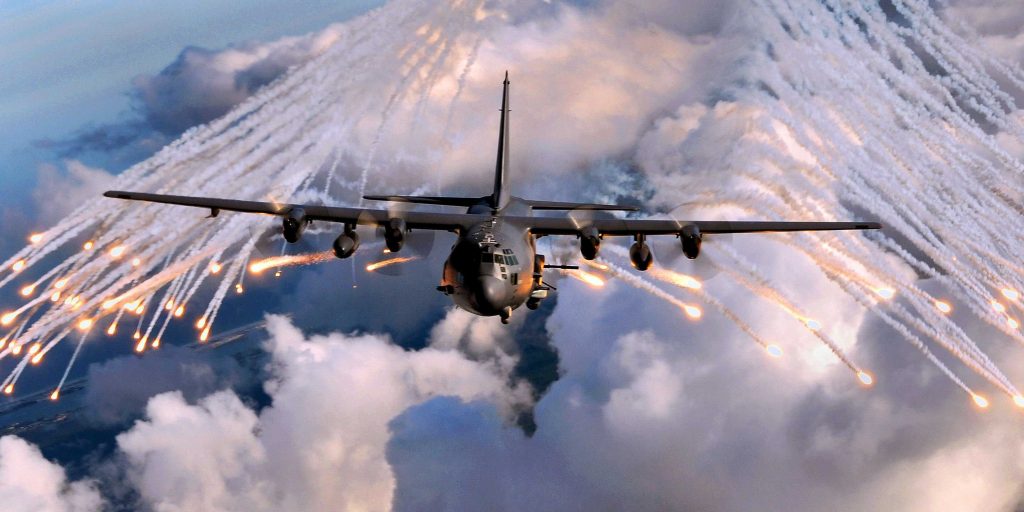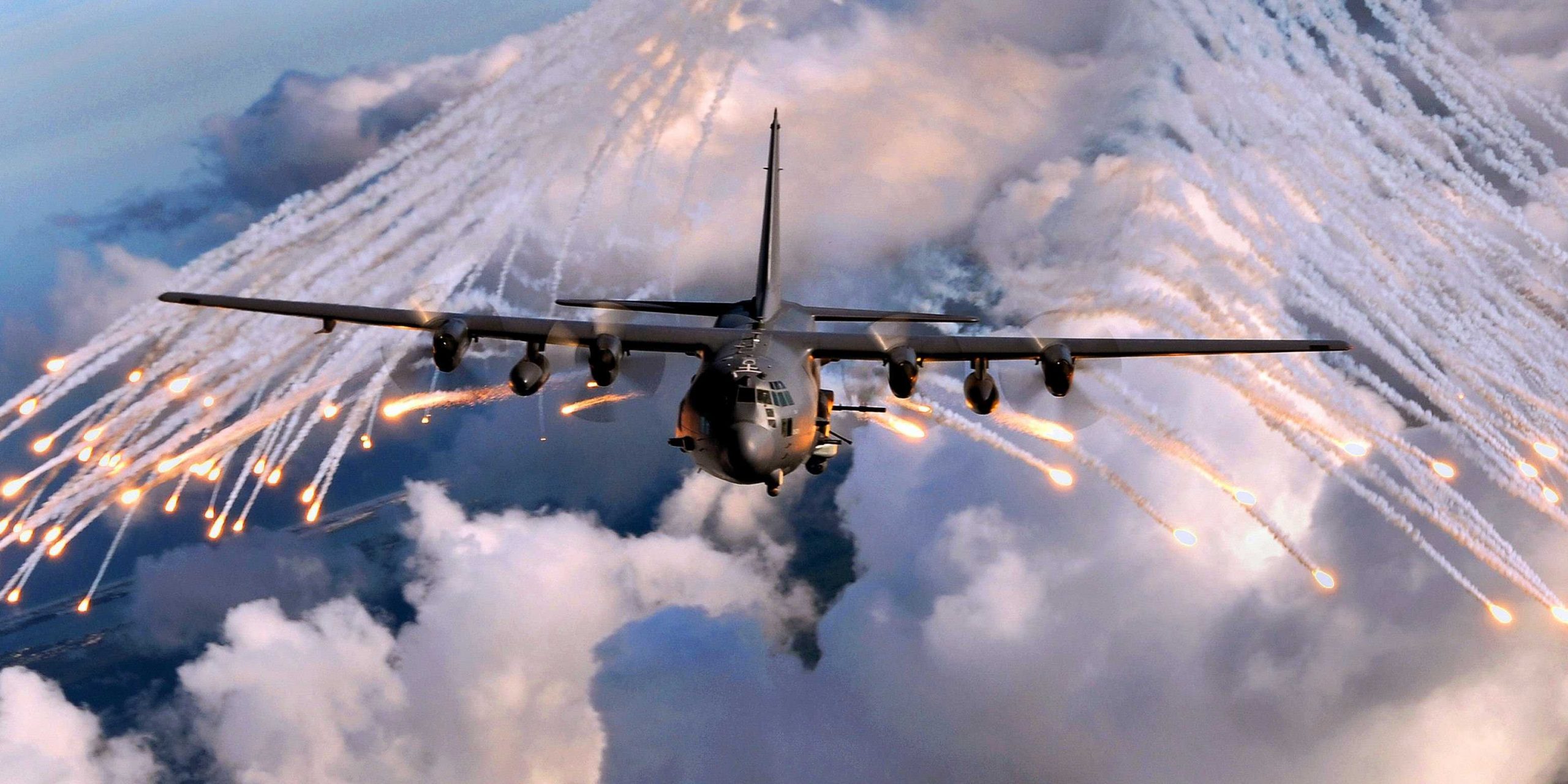
US Air Force
- Since the mid-1960s, AC-130 gunships have provided close air support for troops all over the world.
- The AC-130's utility and effectiveness created a dynasty that's now on its sixth version.
- "The sheer number of weapons options it brought to the battlefield was wild," a former Air Force combat controller told Insider.
- See more stories on Insider's business page.
If you were to ask special operators about their favorite close-air-support aircraft, you would get two answers: the A-10 Thunderbolt and the AC-130 gunship.
Both platforms are beloved by commandos and conventional ground troops alike for their effective firepower, but the AC-130 gunship has the edge over the A-10 because of its unique ability to fire continually against a target.
Essentially an aerial artillery platform, the AC-130 attacks using the "pylon turn" technique – flying in a wide circle above the target area, allowing for a steady volume of fire, as opposed to having to turn and come back like the A-10.
The AC-130 is so effective that it has been supporting conventional and special-operations troops for close to 60 years, seeing action in Asia, South America, Africa, Europe, and the Middle East.
The latest version of the gunship, the AC-130J, continues to be well traveled. In March, an AC-130J operated in Japan for the first time, and in May, an AC-130J trained in Romania for the first time.
But everything began in the jungles of Vietnam.
'Puff, the Magic Dragon'
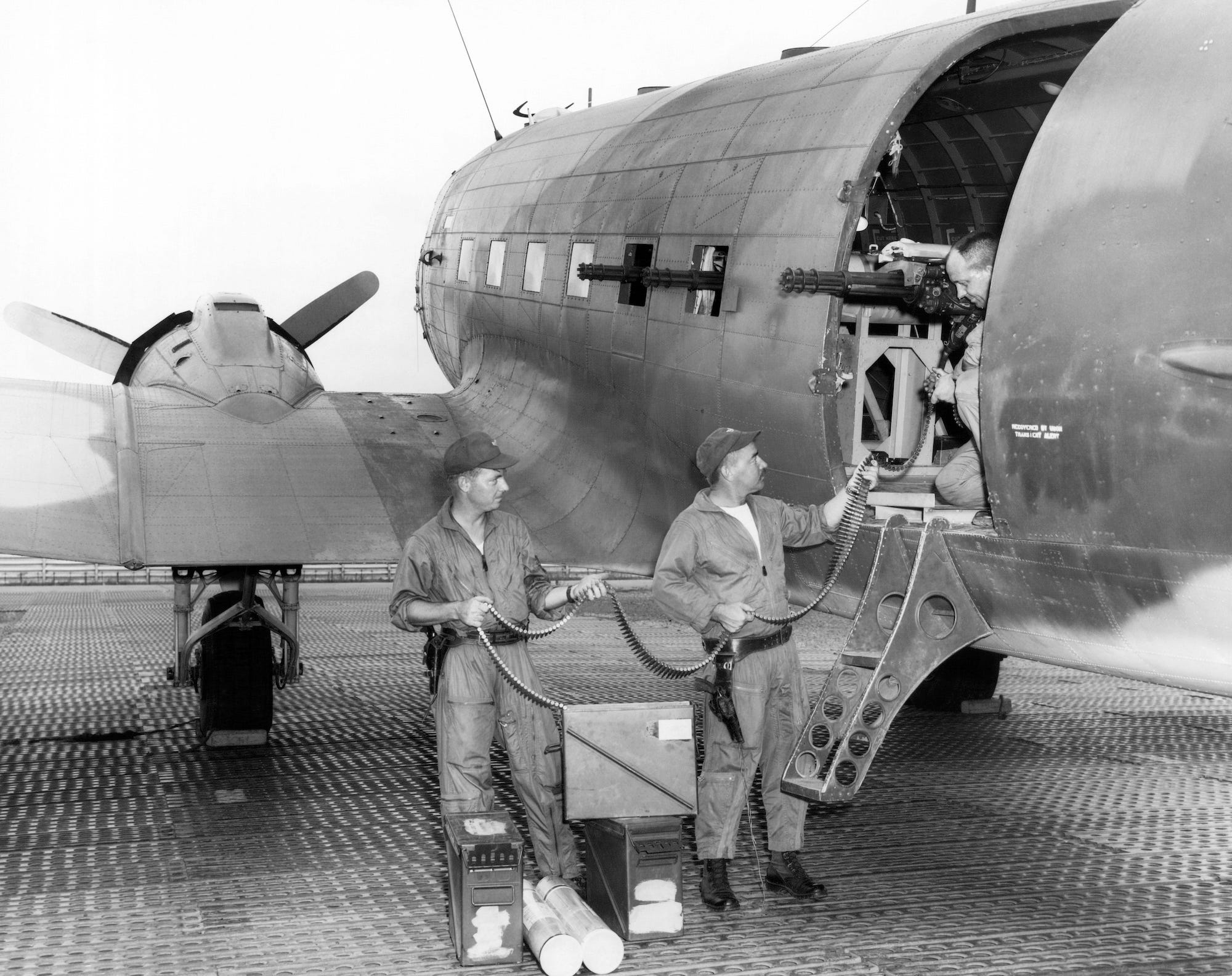
Underwood Archives/Getty Images
The AC-130 was introduced in the 1960s and first saw action during the Vietnam War.
It was an upgrade to the AC-47 Spooky, nicknamed "Puff, the Magic Dragon," that had been supporting conventional and special-operations troops. The nickname was inspired by the otherworldly effect the AC-47's miniguns produced when firing at night.
Even the first versions of the aircraft, with their primitive nighttime capabilities, made the difference, saving infantry companies and special-operations recon teams from getting wiped out by the numerically superior North Vietnamese or Viet Cong.
Firing 40 mm and 105 mm rounds, the AC-130 and AC-47 gunships were also credited with destroying more than 10,000 enemy vehicles.
The aircraft's utility and effectiveness pushed the Air Force to invest more in the platform, beginning a dynasty that has gone through six versions: the AC-130A, -E, -H, -U, -W, and -J. Only the -W and -J models remain in service.
Death from above
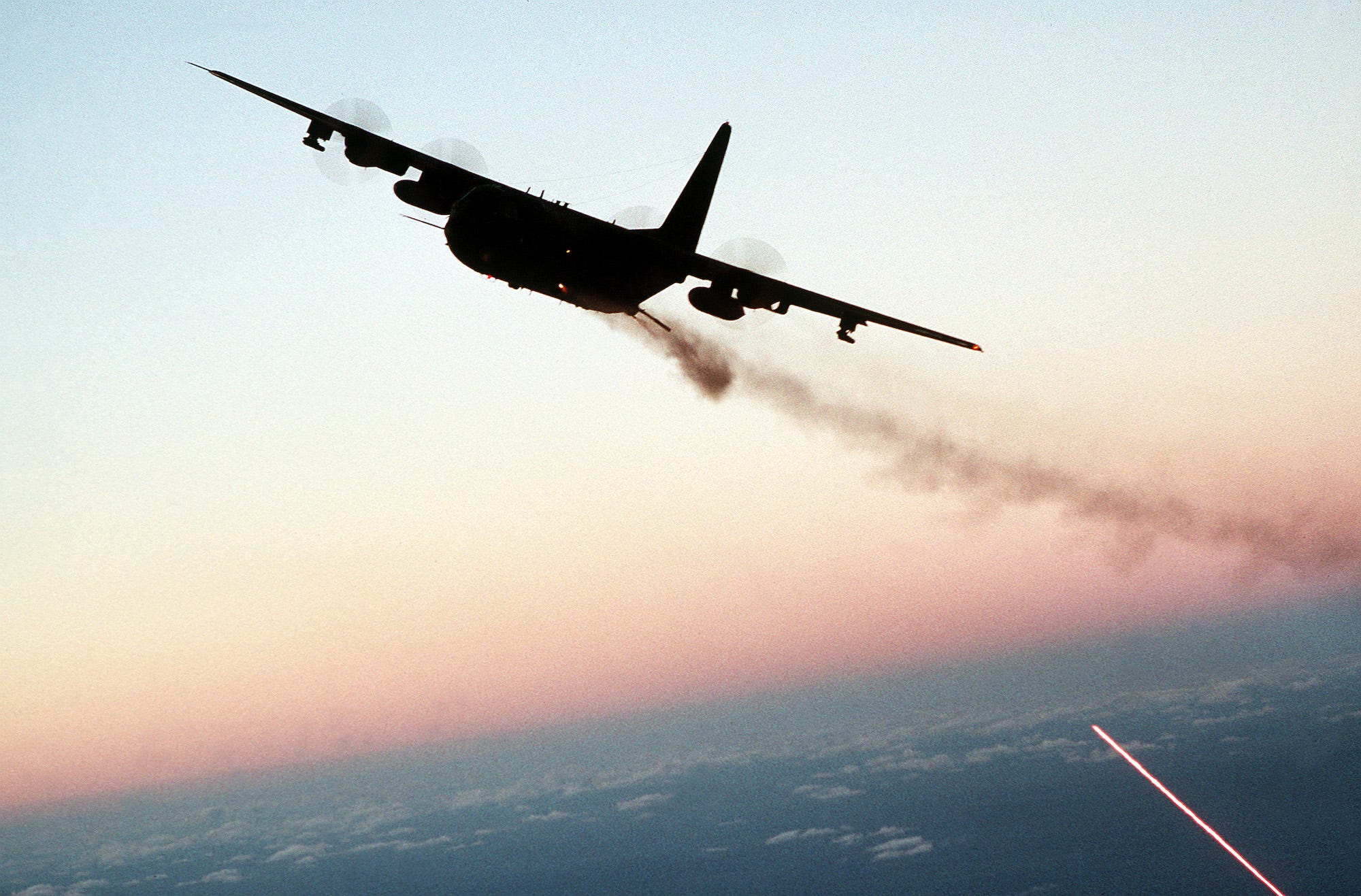
US Air Force/Tech. Sgt. Lee Schading
The AC-130 gunship's primary mission sets are close air support, air interdiction, and armed reconnaissance, but it can also participate in combat search and rescue and forward air control if needed.
The AC-130 gunship is beloved because of its arsenal, loiter time, and diverse uses.
The latest iteration of the aircraft, the AC-130J Ghostrider, packs quite a punch, with 30 mm and 105 mm cannons and the ability to launch "smart munitions," such as the GBU-39 Small Diameter Bomb and the AGM-114 Hellfire and AGM-176 Griffin missiles.
With an operational range of 3,000 miles and the ability to do aerial refueling, the AC-130 can stay over a target for an extended period.
Sensors aboard the AC-130 can also provide real-time intelligence to troops on the ground and commanders back in headquarters. This intelligence-gathering capability can be as important, if not more important, than its superb firepower.
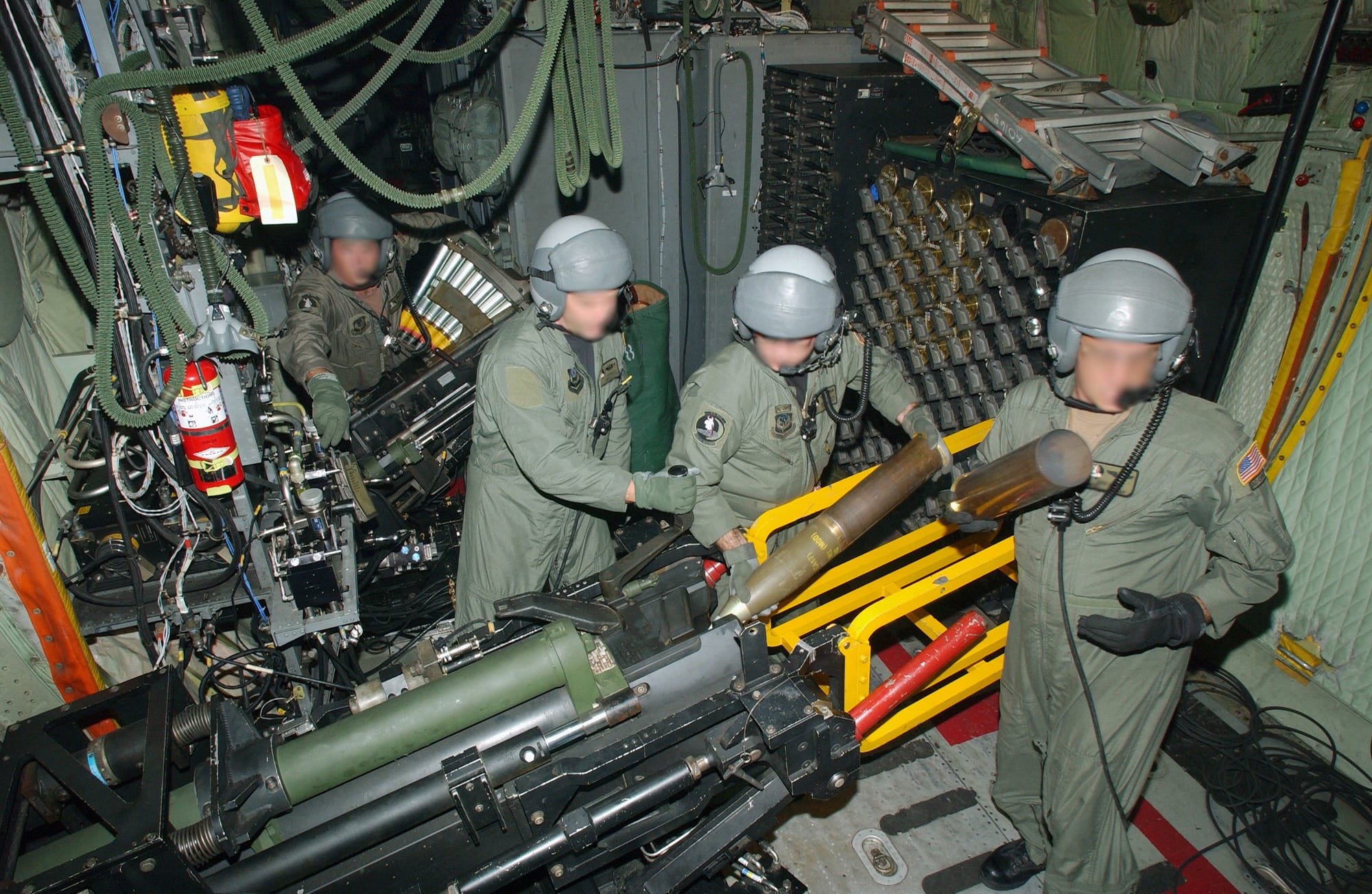
US Air Force/Staff Sgt. Greg Davis
"What makes the AC-130 unique is the ability to provide close air support with multi-caliber weapons, engaging two targets simultaneously, and the ability to use ISR [Intelligence, Surveillance, and Reconnaissance] to support a wide range of missions," BA, a former AC-130 gunner, told Insider.
Special-operations units will often send individuals on board the AC-130s as liaisons.
During the opening days of the invasion in Afghanistan, the "Night Stalkers" of the Army's 160th Special Operations Aviation Regiment and the Navy's SEAL Team 6 both had people aboard the AC-130s that were supporting their operations in order to coordinate fire.
Such liaisons provide important perspective to the AC-130 crews, helping them understand what troops on the ground are seeing and the resistance they're facing.
"I had an AC-130W overhead a few times, and the sheer number of weapons options it brought to the battlefield was wild," a former Air Force combat controller, who was responsible for coordinating close air support, told Insider.
"The payload included cannons, glide bombs and Griffin missiles. They also had a pretty solid on-station time and the crews stayed longer than they were supposed to because they wanted to work and CAS [close air support] is their dedicated mission," the former combat controller said.
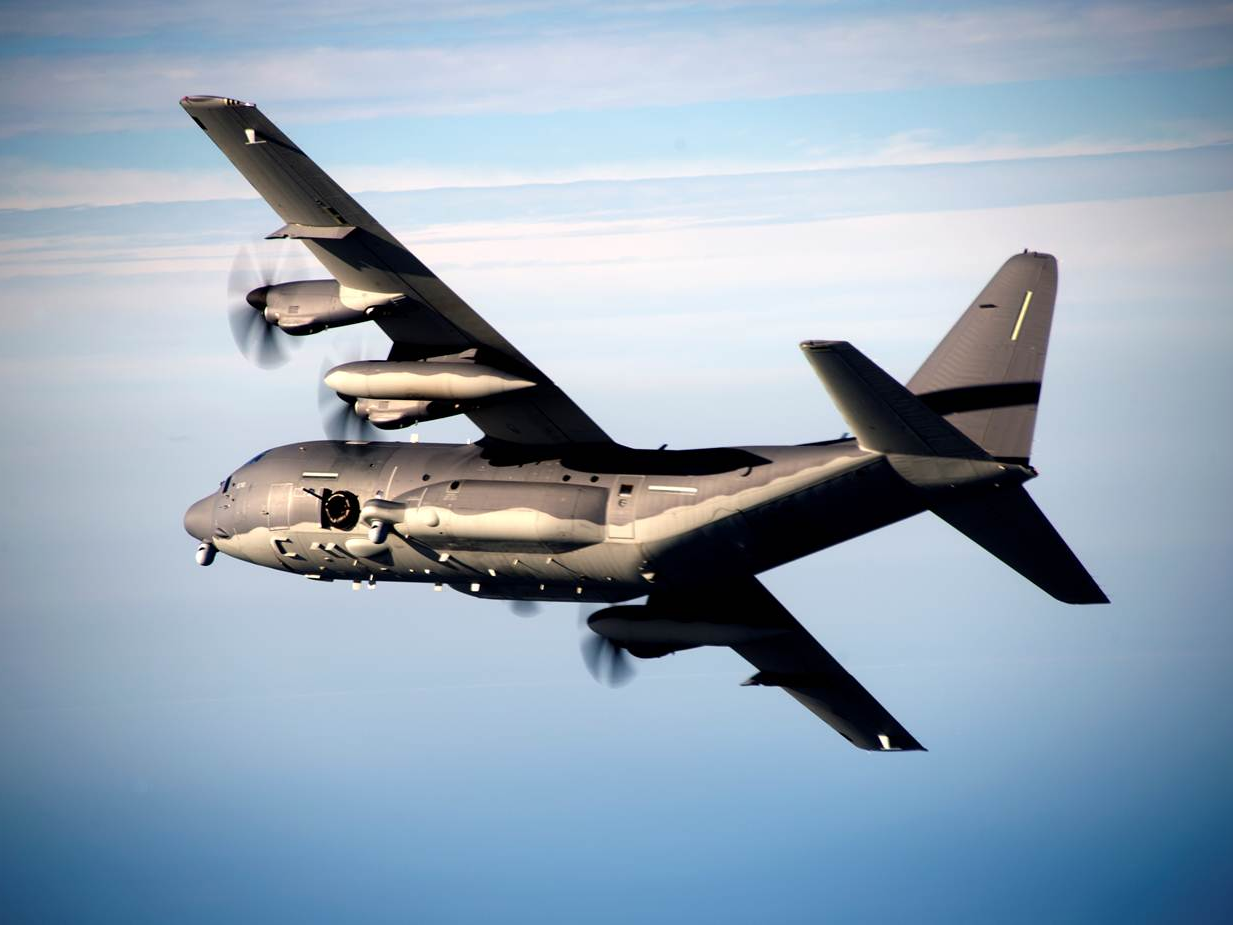
Air Force/Courtesy photo
AC-130 crews are often unsung heroes, saving the day with their precise and overwhelming firepower. They don't get enough credit or public recognition, but that's not why they do it.
"Supporting SOF [special-operations forces] was a very rewarding mission. To work with the best in the world, from other counties, was truly an honor," BA said. "These men trusted us with their lives when it truly mattered. The time of day and the distance from home was never considered. We knew our mission was to support the ground guys and to get them back 'home.'"
The US military's air superiority has ensured that AC-130s have had very few casualties. For all its capabilities, the aircraft is restricted by its relatively slow speed and low maneuverability, making it an easy target for enemy fighters or anti-aircraft defenses.
The Air Force lost its only AC-130 to enemy action in 1991, during Operation Desert Storm.
Designated "Spirit 03," the AC-130H Spectre was supporting US and coalition troops as they advanced through Kuwait when it was shot down by an Iraqi portable surface-to-air missile, killing all 14 Air Commandos aboard in the largest single loss of life in Air Force Special Operations Command's history.
Stavros Atlamazoglou is a defense journalist specializing in special operations, a Hellenic Army veteran (national service with the 575th Marine Battalion and Army HQ), and a Johns Hopkins University graduate.
